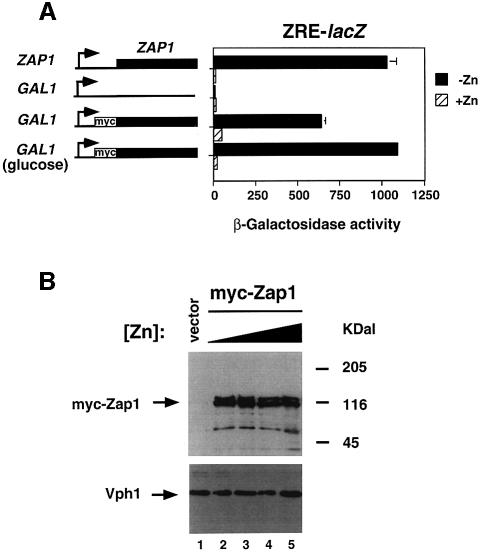Fig. 1. Regulation of Zap1 activity by zinc occurs at a post-translational level. (A) Wild-type (DY1457) and zap1 mutant (ZHY6) cells containing either the pYef2 vector or pMyc-Zap11–880 were grown to exponential phase in LZM-galactose supplemented with either 5 µM (–Zn) or 1000 µM (+Zn) ZnCl2. Zap1 activity in each strain was assessed using the pDg2 ZRE-lacZ reporter. ZHY6 pMyc-Zap11–880 transformants were also assayed after growth in glucose, a carbon source that represses most but not all expression from the GAL1 promoter. A representative experiment is shown and the error bars indicate 1 SD. (B) The stability of Zap1 is not affected by zinc status. Wild-type (DY1457) cells transformed with the pYef2 vector and zap1 mutant (ZHY6) cells bearing pMyc-Zap11–880 were grown in LZM-galactose to exponential phase. The concentrations of ZnCl2 added to the medium were 5 (lane 2), 250 (lane 3), 500 (lane 4) and 1000 µM (lanes 1 and 5). Crude protein extracts were prepared, fractionated by SDS–PAGE analysis, and assayed for Zap1 and Vph1 protein levels by immunoblotting.

An official website of the United States government
Here's how you know
Official websites use .gov
A
.gov website belongs to an official
government organization in the United States.
Secure .gov websites use HTTPS
A lock (
) or https:// means you've safely
connected to the .gov website. Share sensitive
information only on official, secure websites.
